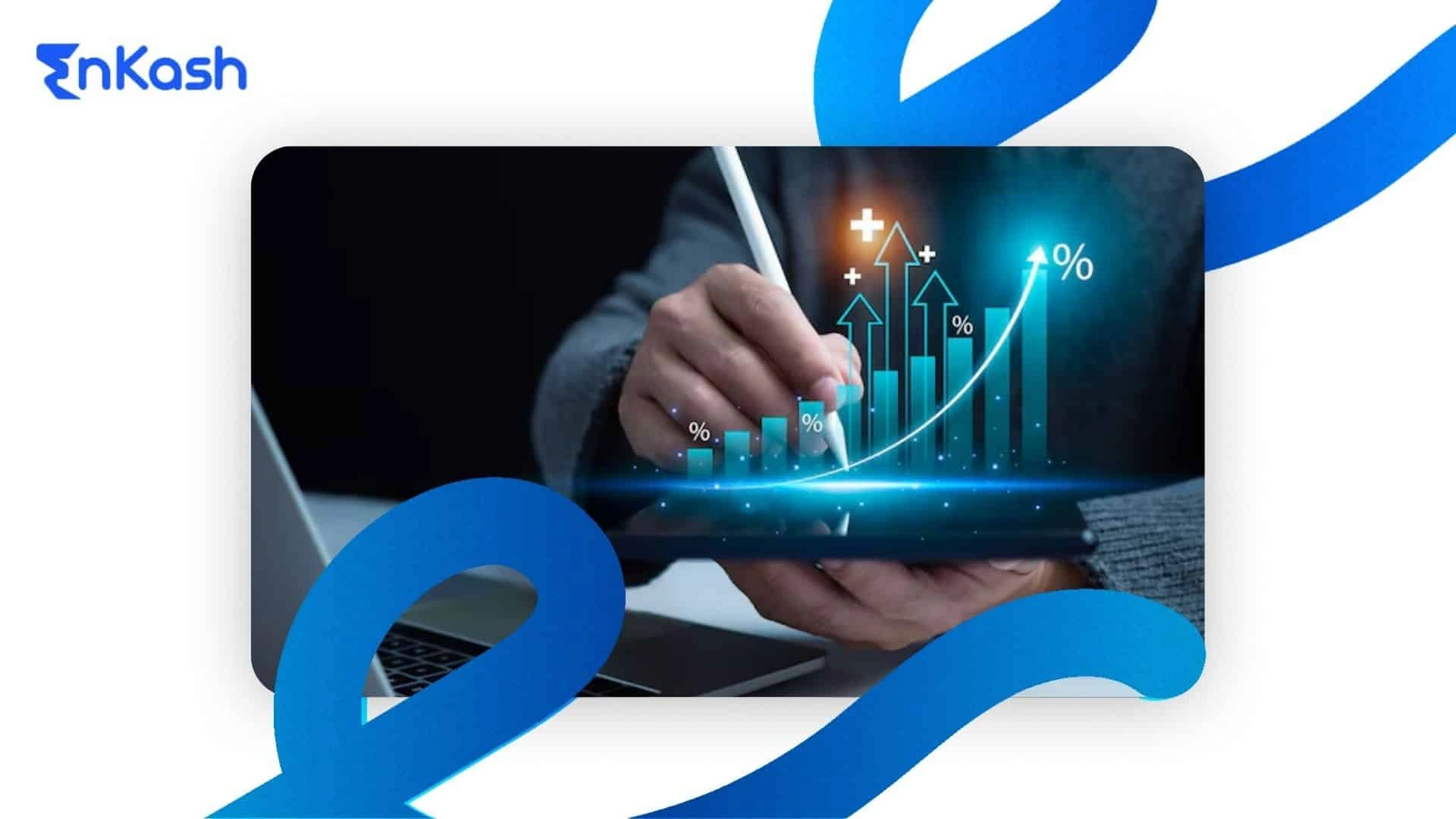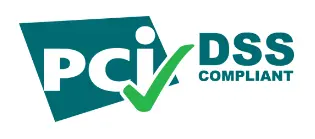Businesses that operate online and are willing to make their presence online need to have a secure and efficient payment system. Whether you have an eCommerce platform or a website for your services, providing your customers with a seamless payment experience is paramount. A payment gateway acts as a bridge between your website and the financial institutions that process the transactions. It ensures the secure transfer of payment information and enables you to accept various payment methods such as credit cards, debit cards, and digital wallets.
Choosing the right payment gateway for your website requires careful consideration of several factors, including compatibility with your website host, fees and service charges, security measures, ease of use, and reliability. In this comprehensive guide, we will walk you through the process of selecting and integrating the perfect payment gateway for your specific business needs.
What is a payment gateway?
A payment gateway is a service that enables secure financial transactions between a customer and a vendor. It acts as a portal that facilitates the flow of transaction data between the customer, the merchant’s website, the payment processor, and the bank. The payment gateway encrypts sensitive payment information to ensure its security during transmission, protecting it from unauthorized access and data breaches.
How does a payment gateway work?
When a customer initiates a payment on your website, the payment gateway performs several tasks to complete the transaction. Here is a simplified overview of the payment processing flow:
Customer initiates a payment: The customer enters their payment details, such as credit card information or digital wallet credentials, on your website’s checkout page.
Payment data encryption: The payment gateway encrypts the customer’s payment information to protect it during transmission.
Payment gateway forwards data: The encrypted payment data is securely transmitted from your website to the payment gateway’s server.
Payment processor and acquiring bank: The payment gateway sends the payment data to the payment processor, which is typically a third-party company that facilitates the transaction between the merchant and the customer’s bank. The payment processor then forwards the payment data to the acquiring bank, which is the bank that processes the payment on behalf of the merchant.
Authorization and authentication: The acquiring bank verifies the customer’s payment details with the respective card network (Visa, Mastercard, etc.) or digital wallet provider. The card network or digital wallet provider authenticates the transaction and checks if the customer has sufficient funds or credit limit.
Transaction approval or decline: The acquiring bank sends an authorization response back to the payment processor, indicating whether the transaction is approved or declined.
Payment gateway response: The payment gateway receives the authorization response and relays it to your website. Based on the response, your website can display a confirmation message to the customer or prompt them to try another payment method if the transaction was declined.
Settlement and fund transfer: If the transaction is approved, the acquiring bank initiates the settlement process, transferring the funds from the customer’s account to the merchant’s account. The time it takes for the funds to reach the merchant’s account depends on the payment processor and the merchant’s bank.
Key Considerations before Adding a Payment Method
Before integrating a payment gateway into your website, there are several important factors to consider to ensure that you choose the right payment methods for your business and provide a seamless payment experience for your customers.
Customer preferences: Understanding your customers’ preferences is crucial when selecting payment methods for your website. Research and analyze the payment methods commonly used by your target audience. Consider factors such as geographical location, demographics, and industry-specific payment preferences. By offering the payment methods your customers are familiar with and trust, you can increase conversion rates and customer satisfaction.
Fees and service charges: Different payment gateways charge varying fees and service charges for their services. It is essential to compare these costs and understand the pricing structure before making a decision. Consider setup fees, transaction fees, monthly fees, and any additional charges for services like fraud prevention or international transactions. Be aware of any hidden fees or long-term contracts that may impact your budget.
Security: Security is paramount when it comes to handling sensitive customer payment information. Ensure that the payment gateway you choose adheres to industry-standard security protocols, such as PCI DSS compliance. Look for features like data encryption, tokenization, and fraud detection tools to protect your customers’ data and minimize the risk of unauthorized access or data breaches.
Ease of use: A user-friendly payment gateway can significantly impact your customers’ experience on your website. Look for a payment gateway with a straightforward and intuitive user interface that seamlessly integrates with your website’s checkout process. Consider features like guest checkout options, saved payment details for returning customers, and mobile-responsive design to provide a smooth payment experience across different devices.
Reliability: Reliability is crucial when it comes to processing payments on your website. Choose a payment gateway with a proven track record of stability and uptime. Check customer reviews and ratings to ensure that the payment gateway consistently delivers reliable service without frequent disruptions or technical issues. A reliable payment gateway ensures that your customers can complete their transactions without any interruptions or delays.
Types of payment methods
Different customers prefer different payment options, so offering a range of choices can cater to a broader audience. Common payment methods include credit cards, debit cards, digital wallets, and bank transfers. Assess your target market and industry to determine which payment methods are most relevant and widely used.
Adding a Payment Method to Your Website
Once you have considered the key factors and selected the payment gateway that aligns with your business needs, it’s time to add the payment method to your website. The process generally involves several steps, including reviewing the compatibility of your website host, selecting the payment methods or gateways, comparing fees and service charges, integrating the payment method, and creating a merchant account.
Review the compatibility of your website host
Before integrating a payment method, review the compatibility of your website host with various payment gateways. Different website hosts have different lists of compatible payment gateways and provide specific integration guides.
Select your payment methods or gateways
Based on your research and understanding of your customers’ preferences, select the payment methods or gateways that you want to offer on your website. Consider the variety of payment options, such as credit cards, debit cards, digital wallets, and bank transfers. It’s recommended to provide multiple payment methods to cater to different customer preferences and increase conversion rates.
Compare the fees and service charges
Carefully compare the fees and service charges of different payment gateways to ensure that they align with your budget and business requirements. Take into account setup fees, transaction fees, monthly fees, and any additional charges for services like fraud prevention or international transactions. Consider the long-term costs and benefits of each payment gateway to make an informed decision.
Integrate the payment method
Integrating a payment method into your website involves following the integration guides provided by the payment gateway or website host. Depending on the integration method (API integration, plugin integration, or SDK integration), you may need to follow specific instructions provided by the payment gateway provider. This typically includes adding code snippets, configuring settings, and testing the integration to ensure a smooth payment experience.
Create a merchant account
To receive payments through the integrated payment gateway, you will need to create a merchant account with the payment gateway provider. This account allows you to manage and track your transactions, view payment analytics, and access customer support. Follow the registration process provided by the payment gateway to set up your merchant account, providing the necessary business and banking information.
Types of Payment Gateway Integration
When integrating a payment gateway into your website, you have several options depending on your specific business needs. The most common types of payment gateway integration are API integration, plugin integration, and SDK integration.
API Integration: API integration offers the maximum level of customization and flexibility for businesses with custom websites or applications. It involves using the payment gateway’s API (Application Programming Interface) to directly integrate the payment functionality into your website’s code. API integration allows you to have full control over the payment process and design a seamless checkout experience that aligns with your website’s branding.
Plugin Integration: Plugin integration is suitable for businesses using popular website platforms or content management systems (CMS) like WordPress, Shopify, or Magento. Payment gateway providers often offer plugins or extensions that can be easily installed and configured on your website. These plugins provide pre-built integration with the payment gateway, allowing you to add payment functionality to your website without extensive coding or development.
SDK Integration: SDK (Software Development Kit) integration is primarily used for developing custom mobile applications or websites with unique payment requirements. SDKs provided by payment gateway providers enable developers to create their own payment gateway logic and user interface. This integration method offers maximum flexibility but requires advanced programming skills and knowledge.
Ensuring PCI DSS Compliance
When handling sensitive customer payment data, ensuring Payment Card Industry Data Security Standard (PCI DSS) compliance is crucial. PCI DSS is a set of security standards established by the major card networks (Visa, Mastercard, American Express, Discover) to protect cardholder data and prevent fraud.
What is PCI DSS compliance?
PCI DSS compliance is a set of security requirements that businesses must adhere to when processing, storing, or transmitting cardholder data. It applies to all businesses that accept credit card payments, regardless of their size or volume of transactions. Compliance with PCI DSS helps protect both your customers’ payment information and your business from data breaches and financial liabilities.
When do you need PCI DSS compliance?
If you choose to store or process credit card data on your servers, you will need to comply with the applicable PCI DSS requirements. However, if you use a payment gateway that handles the payment data on your behalf and does not store sensitive information on your servers, you can offload some of the PCI DSS compliance responsibilities to the payment gateway provider.
Steps to achieve PCI DSS compliance
To achieve PCI DSS compliance, you will need to follow several steps:
Determine your compliance level: PCI DSS compliance is divided into four levels based on the number of transactions processed annually. Your compliance level determines the specific requirements you need to meet.
Complete the Self-Assessment Questionnaire (SAQ): The SAQ is a set of questions that assess your business’s security practices and controls. The questionnaire helps you identify any vulnerabilities and implement necessary security measures.
Conduct a vulnerability scan: Depending on your compliance level, you may be required to perform regular vulnerability scans of your network and systems. These scans identify potential security weaknesses that could be exploited by hackers.
Implement security measures: Based on the findings from the SAQ and vulnerability scans, implement the necessary security measures to protect cardholder data. This includes measures such as encryption, access controls, network segmentation, and regular security patches and updates.
Submit compliance documentation: Once you have completed the SAQ and implemented the required security measures, you will need to submit compliance documentation to your acquiring bank or payment processor. This documentation may include the SAQ, vulnerability scan reports, and other relevant documents.
Security and Fraud Prevention: Security is a top priority when it comes to processing online payments. Implementing robust security measures and fraud prevention tools helps protect your customers’ sensitive information and mitigate the risk of fraudulent transactions.
Data encryption and security protocols: Ensure that the payment gateway you choose employs strong encryption protocols to secure customer payment data during transmission. Look for industry-standard encryption methods like SSL (Secure Socket Layer) or TLS (Transport Layer Security). These encryption protocols ensure that the payment information is encrypted and cannot be intercepted or tampered with by unauthorized parties.
Fraud detection and prevention measures: Payment gateways often provide built-in fraud detection and prevention tools to identify and mitigate the risk of fraudulent transactions. These tools analyze transaction patterns, customer behavior, and other data points to flag potentially fraudulent activities. Implementing additional security measures like address verification, CVV checks, and IP geolocation can further enhance fraud prevention efforts.
Two-factor authentication: 2FA requires customers to provide an additional authentication factor, such as a one-time password sent to their mobile device, to complete the transaction. This extra layer of security helps prevent unauthorized access to customer accounts and adds a barrier against fraudulent activities.
Enhancing User Experience with Payment Gateway
A seamless and user-friendly payment experience can significantly impact your customers’ satisfaction and increase conversion rates. Here are some strategies to enhance the user experience with your payment gateway:
Optimizing checkout process: Streamline your website’s checkout process by minimizing the number of steps and eliminating unnecessary form fields. A clean and intuitive checkout page reduces friction and makes it easier for customers to complete their purchase. Consider implementing features like guest checkout, autofill for saved payment details, and progress indicators to guide customers through the process.
Streamlining payment flows: Ensure that the payment flow from your website to the payment gateway is seamless and transparent. Avoid redirecting customers to external payment pages whenever possible, as this can disrupt the user experience and erode trust. Instead, opt for integrated payment solutions that allow customers to complete the payment process without leaving your website.
Mobile-responsive design: Ensure that your payment pages are mobile-friendly, with intuitive navigation, clear call-to-action buttons, and responsive design elements. Mobile-responsive payment pages provide a consistent and user-friendly experience across devices, boosting customer satisfaction.
International Payment Gateway Considerations
Expanding your business globally requires careful consideration of international payment gateway options. Here are some key factors to consider when dealing with international transactions:
Multi-currency support: If your business operates in multiple countries or serves customers from around the world, it is essential to choose a payment gateway that supports multiple currencies. Multi-currency support enables customers to pay in their local currency, improving transparency and reducing the risk of currency conversion fees.
Cross-border transaction fees: Be aware of any additional fees associated with cross-border transactions, such as foreign exchange fees or international transaction fees. Consider the impact of these fees on your pricing strategy and profitability. Some payment gateways may offer competitive rates for international transactions or have partnerships with local financial institutions to minimize fees.
Localization and language support: Ensure that the payment gateway you choose supports localization and provides language options for your target markets. Offering payment pages in the local language can enhance the user experience and build trust with international customers. Additionally, providing localized payment methods preferred in specific regions can further improve conversion rates.
Compliance with international regulations: When operating in multiple countries, it is crucial to comply with local regulations and legal requirements. This includes data protection laws, privacy regulations, and financial industry standards.
Payment Gateway Integration Best Practices
To ensure a smooth payment experience for your customers and maximize the benefits of your chosen payment gateway, follow these best practices:
Test transactions and error handling: Before making your payment gateway live, thoroughly test the payment process to ensure that transactions are processed correctly. Test various payment scenarios, including successful payments, declined payments, and refunds, to ensure that your website handles these situations gracefully. Implement error handling mechanisms to provide clear error messages and guide customers through any issues they may encounter during the payment process.
Regularly update payment gateway plugins: If you use a plugin-based integration, regularly update the payment gateway plugin to the latest version provided by the payment gateway provider. These updates often include bug fixes, security patches, and new features that enhance the performance and security of the payment gateway integration. Staying up to date with plugin updates ensures that you benefit from the latest improvements and minimize any potential vulnerabilities.
Monitor transaction analytics: Leverage the analytics and reporting capabilities provided by your payment gateway to gain insights into your transaction data. Monitor key metrics such as transaction success rates, average transaction value, and customer behavior to identify any areas for improvement. Analyzing transaction data helps you optimize your payment processes, identify potential issues, and make data-driven decisions to enhance the overall payment experience.
Provide clear payment instructions: Ensure that your website provides clear and concise instructions for customers on how to complete a payment. Clearly communicate the accepted payment methods, any necessary account setup requirements, and any additional steps customers may need to take to complete the transaction. This transparency reduces confusion and increases customer confidence in making the payment.
Customer Support and Documentation
When selecting a payment gateway, consider the availability and quality of customer support provided by the payment gateway provider. Prompt and reliable customer support is essential in case of any technical issues, payment disputes, or general inquiries. Look for payment gateway providers that offer accessible support channels, such as email, phone, or live chat, to address any concerns or questions you may have.
Comprehensive documentation and resources provided by the payment gateway provider are also crucial for smooth integration and ongoing support. Look for detailed integration guides, API documentation, FAQs, and troubleshooting resources to assist you during the integration process and address any technical challenges that may arise.
Developer-friendly APIs and SDKs are valuable assets for businesses with specific customization requirements or complex integrations. Choose a payment gateway provider that offers well-documented APIs and SDKs to facilitate integration and enable developers to build custom payment solutions.
How to Integrate a Payment Gateway into a Website (Step-by-Step Guide)
The process of integration with the payment gateway API of a website consists of several stages, all the way from the stages of preparation and acquisition to testing and launching the system. Below is a guide that explains the steps involved in integrating a payment gateway system into your website.
Step 1: Choose Payment Gateway
The most basic question remains in cases of integration, which is what is the best payment gateway suitable for a website to provide effective and successful transactions from the customer it is used by how:
- Security plugins (SSL / fraud / PCI compliance).
- Optimal or high charges are charged to the system user for setting up the payments and for making payments, and some even charge additional costs for maintenance.
- Different payment options are provided (credit/debit cards, UPI, wallets, net banking).
- Offers further benefits as opposed to common methods of integration such as the use of SDKs and APIS.
- How the carrier responds to issues (availability, resolution).
The enterprise should think over the payment gateway options due to such considerations as the following: security (such as SSL certificate, fraud protection, and PCI DSS compliance), cost (set up fees, and charges-per-transaction, maintenance fees), payment mediums supported (visa, UPI, wallet, net banking), ease of integration (availability of SDK, API) and customer service (availability all round, resolve any conflicts quickly).
Some of the best payment gateway providers in the market are as follows:
- EnKash- Good for business-to-consumer payments and corporations
- Razorpay – Good for businesses in India as it offers more than one payment option for them.
- Stripe- Most people prefer it in international business.
- PayPal – Designed for global-level shoppers and subscribers.
- PayU- This is mostly obtained for start-ups and small enterprises.
Step 2: Open a Merchant Account
Conversely, if you pick a service provider, you can have a merchant account constructed on its website.
Open an account with the payment processor and provide the required information about yourself and your company.
Also, provide the following documents in support;
- The proof that your business is registered.
- Account information of the bank where the business is to receive the money
- PAN card or taxpayer identification number.
It may seem easy, but one might need to follow some instructions to get approved and have the account activated.
Having been authorized, one shall be entitled to the payment gateway dashboard that helps in managing transactions and other settings.
Step 3: Fetch API Keys
Now that the merchant account has been set up, the next step is to request the API keys and associate the payment gateway to the webpage of the user.
- Log in to the payment gateway.
- Navigate to Developer or API.
- Generate API keys(Public and Secret Keys).
- Use your keys to authenticate the transaction of payments.
What Are API Keys Necessary For?
- Public Key: This is used for transactions that are performed on the front end (e.g., submitting a payment request).
- Secret Key: This is used in the back end for secure processing and verifying any payments.
Step 4: Implement Payment Gateway Using API
With the assistance of the payment provider’s API documentation, the developers are now in a position to commence the payment gateway integration.
- ️ Develop the structure and outward transaction cubic.
- Employ encrypted communication codes and tokenized systems.
- Create webhooks to obtain the updates as transactions move along.
Most providers have SDKs and plug-ins for easy integration into platforms such as:
- WordPress (WooCommerce)
- Shopify
- Magento
- Custom design websites(PHP, Node.js, Python, etc.)
Step 5: Test Transactions
Before going live, it is necessary to conduct trials of the payment gateway integration, normally within the sandbox environment.
- In the absence of real transactions, test API keys can be used to mimic payments.
- Inspect for error handling, transaction issues, and transaction denials.
- Maintain well with the user checking out procedure.
Typical Problems to Address:
- Trying to pay for a good when the account has no or little money.
- Usage of an inappropriate API key. The duration of completion of a transaction becomes too long because of the system being slow.
- Late or error-filled notifications if a payment has been received or if the transaction is completed.
Step 6: Proceed with the Promotion of your Services and Monitor Transactions
If the demo transactions are validated, you can now operationalize the solution.
- Access the live merchant APIs for actual end-user transactions.
- Take advantage of the merchant console of the application and observe the monies coming into the account.
- Put some mechanisms in place like availing fraud checks to reduce attempts against the solutions too.
How EnKash Makes Payment Gateway Integration Easy?
EnKash is modernizing the field of payment gateway integration into websites by providing rapid, secure, and scalable payment solutions.
Key Features of EnKash Payment Gateway:
- Smooth API Integration- Quick and easy setup for businesses.
- Multiple Payment Options- Credit/debit cards, UPI, Net Banking, and corporate payments are part of the options they support.
- Enhanced Security- Advanced encryption and fraud protection.
- User-Friendly Dashboard- Tow sight of real-time analytics, and tracking transactions.
- Easy Reconciliation- Automatic tracking of invoices and settlement.
Why Choose EnKash?
- Designed specifically for enterprise payment strategies and vendor transactions.
- Perfect for companies interested in automating several payments. At the same time, it also includes user-friendly developer guides for integrating a payment gateway.
- Speedy operations free from any compromise of security can be guaranteed by installing EnKash’s secure payment gateway, which is designed for a business website where reliable and fast transactions are essential.
Conclusion
Selecting and integrating the right payment gateway for your website is a critical decision that can have a significant impact on your business’s success. By considering factors such as compatibility, fees, security, user experience, and international requirements, you can make an informed decision that meets your specific business needs.
Remember to prioritize security and fraud prevention measures to protect your customers’ payment information and build trust. Optimize the user experience by streamlining the checkout process, providing multiple payment options, and ensuring mobile responsiveness. Regularly monitor transaction analytics and stay up to date with the latest updates and improvements from your chosen payment gateway provider.














